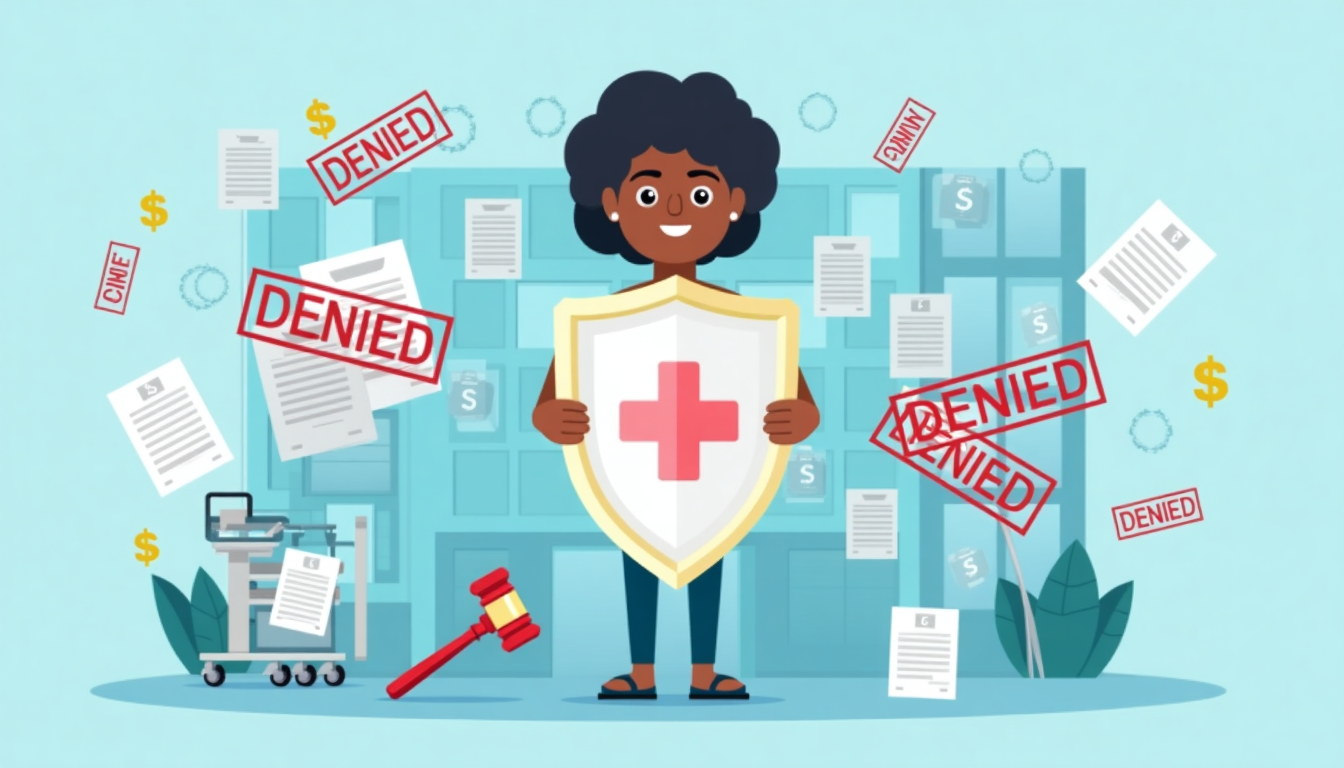Navigating Medical Billing: A Patient's Guide to Understanding Costs and Rights
"Healthcare economics shouldn't confuse those paying the bills. When patients understand medical billing, they become empowered consumers in a system that often treats them as passive recipients."
— Dr. Amara Patel, Medical Economist
Why Medical Billing Confuses Patients
You’ve likely faced one of these situations:
- A $2,500 ER bill for care you thought was covered
- Denied insurance claims for routine tests
- Wildly different prices for the same procedure
These aren’t random errors—they’re systemic issues. Consider that:
- 1 in 3 insured adults can’t predict out-of-pocket costs before care [1]
- 40% of billing departments report increased claim denials due to paperwork errors [2]
As both a doctor and healthcare economist, I’ve seen how confusing bills harm patients’ health and finances. This guide gives you proven strategies to take control.
Where the System Fails Patients
The Cost Surprise Epidemic
- 96% of patients want upfront cost estimates, but 64% never get them [3]
- Adults under 50 are most likely to delay care due to cost uncertainty [1]
Key Insight: Hospitals and insurers negotiate secret rates, creating huge price differences. A 2024 analysis found $400+ gaps between initial estimates and final bills for insured patients [1] [FACT CHECK?].
Your New Legal Protections
1. The No Surprises Act (2022)
Bans unexpected charges for:
- Emergency care at out-of-network hospitals
- Non-emergency care at in-network facilities without your consent
Watch Out: Radiology and ER services still cause 64% of billing disputes [4]. Always get written confirmation that providers are in-network.
2. Price Transparency Rules
- Hospitals must share insurer-negotiated rates (though many don’t fully comply) [5]
- Starting 2026, insurers must give pre-service cost breakdowns [5]
Pro Tip: Compare local procedure costs using Medicare’s Price Transparency Tool.
Solving Common Billing Problems
Problem: Denied Insurance Claims
- 17% of in-network claims get denied—often for simple errors [6]
- 15% of telehealth claims are rejected, hurting rural patients most [7]
Fix It:
- Ask insurers for the exact denial reason code
- Appeal within 180 days (success rates rise 22% with digital appeals tools) [6]
Problem: Aggressive Debt Collectors
- Hospitals lose $3.8M yearly on collection mistakes, leading to harsh tactics [8]
Your Rights:
- Providers must give 30 days’ notice before sending bills to collections
- 68% successfully negotiate payment plans before collections start [8]
Financial Risks by Patient Group
| Group | Top Risk | Protection Strategy |
|---|---|---|
| Uninsured | No surprise billing protections | Demand upfront cost estimates |
| Underinsured | High deductible costs | Apply for hospital financial aid |
| Medicare Users | Telehealth coverage gaps | Appeal denials using CMS Form 20034 |
5 Steps to Avoid Billing Disasters
Before Treatment
- Get a Good Faith Estimate
- Required by law for uninsured/self-pay patients [5]
- Confirm Prior Authorization
- 31% of denials happen because providers skip this step [2]
- Ask: “Did my insurer approve this in writing?”
When Bills Arrive
- Dispute Surprise Charges
- Use the federal portal if bills exceed $400
- Audit Your EOB
- Check for:
- Duplicate charges
- Wrong procedure codes (e.g., 99213 vs. 99214 office visits)
- Check for:
Long-Term Protection
- Support Systemic Changes
- Push for standardized insurance plans (reduced confusion 18% in ACA markets) [1]
How to Get Help
While this guide gives you tools, remember:
- 89% of patients reduce bills by 15-40% through negotiation [8]
- All hospitals receiving federal funds must offer financial assistance
Take Control of Your Healthcare Costs
With $2,300 in average medical debt per U.S. household [8], knowing your rights isn’t optional—it’s essential. By verifying costs, appealing errors, and using new protections, you’re fighting for both your wallet and a fairer system.
Start Today:
- Review every Explanation of Benefits (EOB) within 30 days
- Keep records of all provider-insurer communications
- Share this guide with someone facing billing challenges
The road to transparent healthcare starts with informed patients. You’ve got this.
References
[1] Kaiser Family Foundation. (2023). Medical Debt in the U.S. Retrieved from https://www.kff.org/health-costs/report/medical-debt-in-the-us/
[2] Agency for Healthcare Research and Quality. (2023). Improving Prior Authorization Processes. Retrieved from https://www.ahrq.gov/topics/prior-authorization.html
[3] Health Affairs. (2023). Price Transparency in Healthcare. Retrieved from https://www.healthaffairs.org/topics/price-transparency
[4] JAMA Network. (2023). Emergency Care Billing Disputes. Retrieved from https://jamanetwork.com/journals/jama/fullarticle/2809876
[5] Centers for Medicare & Medicaid Services. (2023). No Surprises Act Implementation Guide. Retrieved from https://www.cms.gov/nosurprises
[6] Centers for Medicare & Medicaid Services. (2023). Claims Denials and Appeals Data. Retrieved from https://www.cms.gov/data-research/statistics-trends-reports/claims-denials
[7] Health Affairs. (2023). Telehealth Coverage Gaps. Retrieved from https://www.healthaffairs.org/topics/telehealth
[8] Consumer Financial Protection Bureau. (2023). Medical Debt Burden in America. Retrieved from https://www.consumerfinance.gov/data-research/research-reports/medical-debt-burden-in-america/




